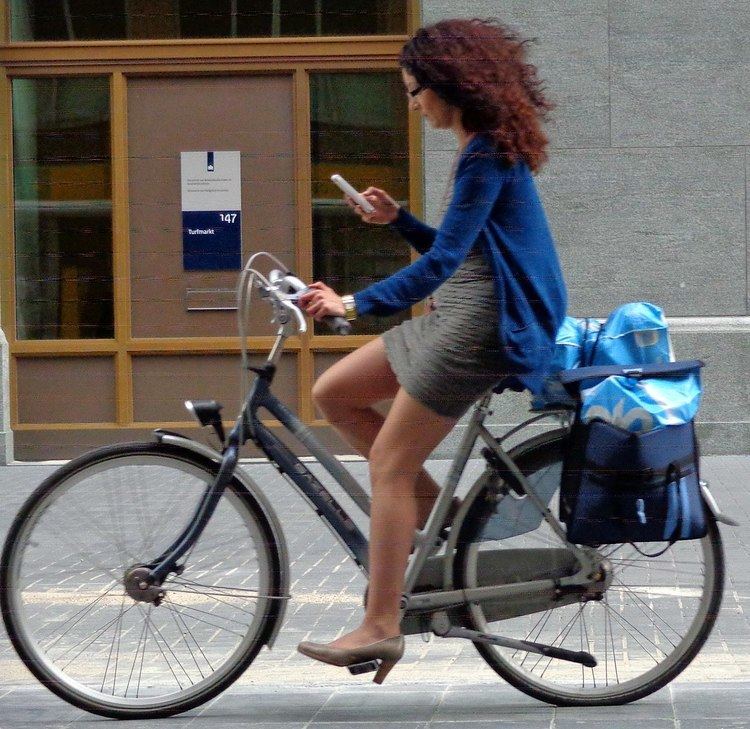 | ||
Active mobility, Active Travel or Active Transportation, is a form of transport of people and sometimes goods, that only uses the physical activity of the human being for the locomotion. The most known forms of active mobility are walking or cycling, though other mobility means such as the skateboard, kick scooter or roller skates are also a form of active mobility.
Contents
The academical literature evidences that public policies which promote active mobility tend to increase health indicators by increasing the levels of physical fitness and reducing the rates of obesity and diabetes, whilst also reducing the consumption of fossil fuels and consequent particulates, Nitrous Oxide and Carbon emissions.
Health and environment
Serious health and environmental problems especially global climate change due to fossil fuel usage, and the continued increase in obesity are a current political concern. A House of Commons of the United Kingdom Health Committee report into Obesity in 2004 recommended promoting and facilitating cycling and walking as key components of an integrated anti-obesity strategy, suggesting "physical activity incorporated into the fabric of everyday life".
Studies have shown that the recent global increase in levels of obesity can be attributed to the decrease in physical activity by children and adults. This is also as a result of an increase in more sedentary forms of leisure (TV, video games) and to low levels of walking and cycling. Correlational studies have shown that across socio-economic groupings in the UK caloric intake does not vary significantly, whereas activity levels and BMI do, and are closely correlated to each other.
The US Centers for Disease Control has also recommended increasing access to active transportation.
Responses from the public administrations
In response to the high level of sedentarian life-style and automobile usage which have negative environmental and health effects, a recent movement has emerged led by public health and environmental campaigners to advocate for stronger policies and practices that promote active travel, and make cycling and walking safer and more attractive. The intention being that these modes could in many instances replace car usage for everyday journeys to school, shops, public services etc. To facilitate this would require local planning and highway authorities to invest in ensuring safe routes are available to these destinations (danger from other road traffic is frequently cited as the primary reason for not cycling). In many areas the current focus of development for cycle provision is on isolated leisure trails, resulting in highly fragmented cycle routes and pavements/sidewalks, which do not link effectively to everyday destinations.
Europe
In 2012 Polis, a network of European cities and regions, published a position paper that calls upon European institutions and other European actors to take action, to ensure that the promotion of health benefits of active travel are maximised in all relevant European policies and programmes. Recommendation are based on references in European policy documents to improving health through active travel which should form the basis of shared objectives, policies, work programmes and investment to increase levels of walking and cycling.
Specific recommendations include:
UK
In the United Kingdom, for example, over 50% of car journeys are under 5 km, which in theory, could be replaced by active mobility means.
In 2008, the UK Association of Directors of Public Health, with Sustrans, CTC, The Ramblers and other agencies, launched a Call to Action on Active Travel. This sets out a number of clear goals for local planning and highway authorities. If achieved, these goals could mark an effective response to the steadily increasing problem of obesity, and also help reduce carbon emissions. However, the process for monitoring progress towards these goals (beyond anecdotal good-news stories) and holding councils to account for their performance, is weak, and threatens to undermine progress towards the goals:
